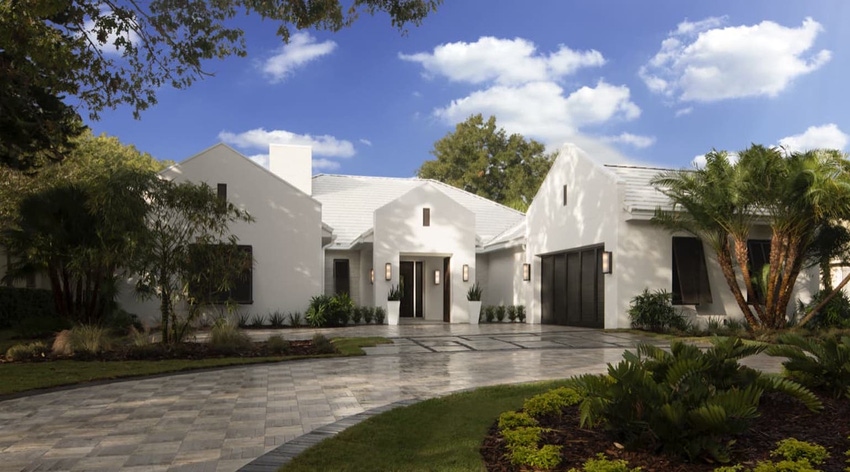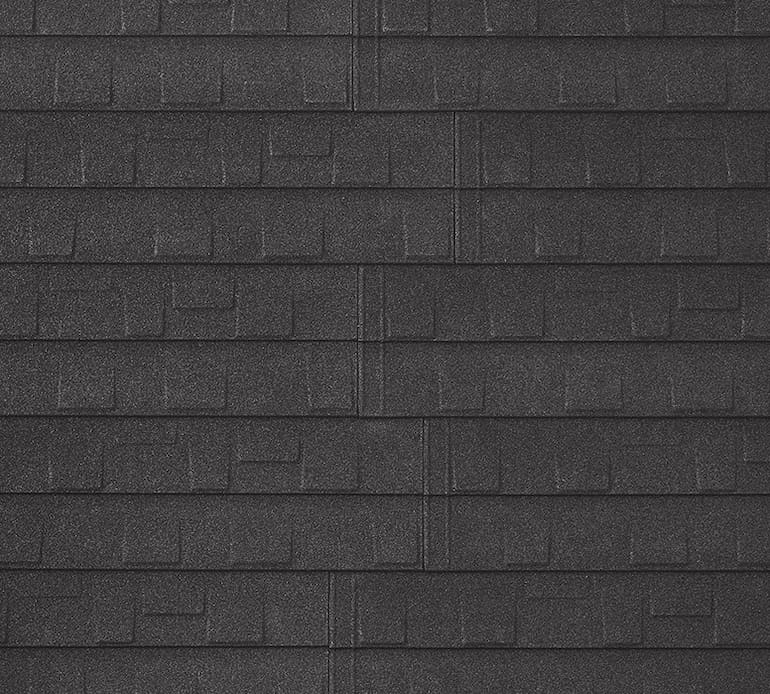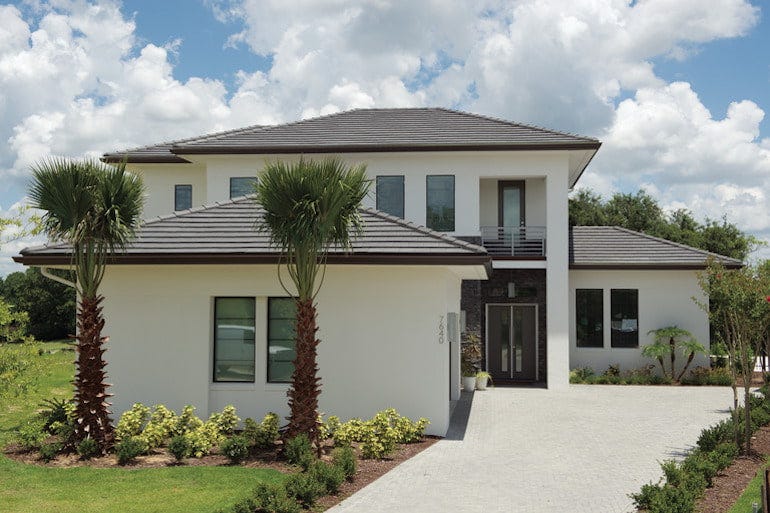3 Major Influences on Roofing Design Trends
Experts from Westlake Royal Building Solutions share the top factors influencing roofing and home design today, including naturalism, disruption and ease. They dig into how these influences shape roofing decisions and how contractors can merge these trends with sustainable and resilient building plans.

Macro-level societal trends and events greatly influence residential home design as well as roofing preferences and colors. A perfect example witnessed over the last decade is the pronounced intersection of technology and information. This trend has resulted in the widespread over-stimulation of consumers as social media and information channels multiplied and content flourished.
As a result, exterior home architecture and roofing shifted markedly toward minimalism, with reduced ornamentation and use of color. These design preferences provided consumers with a much-needed visual break from the over-stimulation coming from technology.
Of course, technology and social media are still ever present today, but one of the biggest influences on home design today is the COVID-19 pandemic. Westlake Royal Roofing Solutions recently released results of research into shifting home design and roofing trends highlighting COVID-19’s influence.
“The pandemic altered how we use our homes,” said Eric Miller, vice president of sales and marketing for Westlake. “We demanded more versatility of our homes as we began to use them as spaces for work, respite, fitness, entertainment and a hub for shipping and receiving goods. Never in our lifetimes has the home needed to be so many things, and design preferences shifted as a result. It’s visible across home styles and roofing choices.”
Three macro-level influences impacting roofing and home design emerged during the study:
Naturalism: A shift toward rural-inspired and contemporary-escape homes incorporating two- and three-color palettes that evoke weathering by nature (rural-inspired) and darkened, refined hues (contemporary escapes)
Disruption: A shift hearkening to the glamour of opposites along with clean-traditional and merged-aesthetic home styles using two-color, high-contrast palettes (clean traditional) and two-color, traditional-tone palettes (merged aesthetic homes)
Ease: A shift toward two types of quiet design homes—the quiet transitional and quiet modern—both using two-color palettes of easy, muted and neutral hues

“Whether influenced by naturalism, disruption or ease, roof pairings for these newer home architecture styles are selected as part of the home’s master two- or three-color palette,” said Renee Labbe, director of design strategy at Broadside Studios, which led the research for Westlake. “These home design preferences are also regional in nature, as are the roof options chosen to complement them.”
Going beyond looks for roofing design trends
Of course, the roof selected for any given home is only partially chosen for its looks. Durability, performance and the ability to reduce energy bills are all key factors that homeowners take into consideration when working with roofing contractors to choose products. Additionally, a roof’s ability to withstand weather cycling, storms, hail, wind and snow as well as protect against fire is increasingly important as global warming intensifies the weather, droughts and storms that test a roof and home’s resiliency.

“The roof system must be able to perform in the region the home is in, as each region experiences different climate conditions,” said Miller. “High-performance roofing materials—including clay, concrete, composite and stone-coated steel—are all offered in numerous profiles and colors and therefore can match any trending home style. The roof material can be selected first for its efficiency and resiliency, then the desired profile and color can be chosen for aesthetics.”
Building professionals interested in learning more about current home architecture and roofing trends may take a continuing education course that delves more deeply into this topic. Additionally, architects who complete the course are eligible for 1 CEU credit.
Read more about:
sustainabilityAbout the Author(s)
You May Also Like




